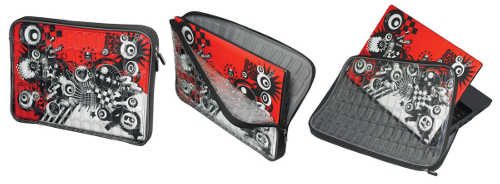
Been eyeing a thin-and-light laptop recently? You know, the kind that usually comes prefixed with the “Macbook Air killer” tag?
Be careful what you wish for.
Broadpoint AmTech analyst Doug Freedman said Wednesday to CNET contributor Brooke Crothers that some PC manufacturers are discovering the limits to how thin a cheap laptop can really be.
“Early production units being built in plastic, with the bottom case being plastic, are cracking,” Freedman said in the interview, referring to discussions he had with original equipment manufacturers and and original design manufacturers.
(ODMs usually just supply “blank” or “white label” devices to OEMs, which then slap on their own brand.)
The solution? Follow Apple’s lead and use a metal shell to house the system, Freedman said in a research note distributed Wednesday morning. At the moment, the MacBook Air and Dell Adamo are the only systems made of metal on the market — but the Air starts at $1,499 and the Adamo $1,999.
By comparison, MSI’s X-Slim 340 — made of mostly plastic — sells for $900.
Of course, with a metal case comes a higher price tag. Which means a “Macbook Air killer” becomes considerably less competitive feature-for-feature, price-for-price, with the more expensive ultrathin laptops already on the market.
The design limits are such a sensitive issue that Intel issued a statement Wednesday saying that the case problem Freedman refers to has nothing to with Intel processors, Crothers reports.
“Case design issues reported to be found by an ODM, not consumers, in early production units for ultra-thin laptops have nothing to do with Intel processors whatsoever. We want to be clear that this is not a CPU design issue,” Intel said in a statement.
Freedman writes that ODMs and OEMs are trying to bring out laptops based on Intel’s “CULV,” or consumer ultra-low voltage, technology in an attempt to bridge the gap between the hot (but underpowered and undersized) netbook market and traditional notebooks. The expensive thin-and-lights on the market now use ultra-low voltage, or ULV, tech.
On the consumer side, that’s why we’re seeing PC manufacturers (Samsung, Lenovo) pumping out larger 11- and 12-inch Atom-powered, Nvidia Ion-based netbooks rather than ULV Pentium/Celeron/Core 2 systems.






















